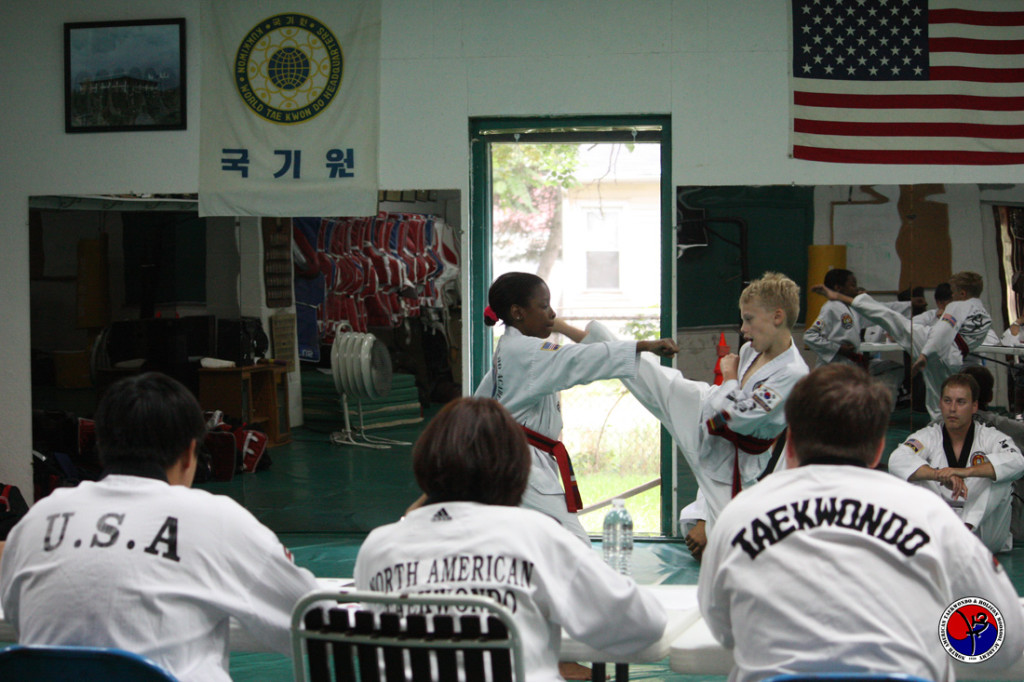
Basic One Step Sparring (일보대련 [Il Bo Dae Ryun]) – A training drill used to practice successful execution and controlled application of stances, blocks, strikes, kicks, and self-defense techniques with a partner in a synchronous, controlled, and predictable manner.
Here an example of one-step sparring from Kukkiwon instructors:
While this training methodology is usually referred to as “one-step”, it includes two-step and three-step sparring, where the number of steps forward from the attacker varies according to the training parameters.
The benefits of one step include a greater sense of timing, distance, and dexterity as well as increased control, accuracy and coordination of one’s techniques. With continued in-depth practice, students should gain speed and fluency in both the physical movement as well and the conditioned response to an attack.
Unfortunately in this era of combat sports and action choreography, one-step sparring is commonly devalued and misunderstood to be an outdated training method at best. Many dismiss one-step as generally useless and/or not realistic for sparring or fighting.
The problem with this line of thinking is placing one step (a training method) in the wrong context; a developmental practice being mistaken for combat application. If we fail to place our training methods in the proper context, we limit our growth and the any potential benefit from practice.
For example, jumping rope is generally useless and not realistic for combat application; jumping rope doesn’t help you learn how to fight. Despite this, just about all striking arts practiced today recognize the benefits of jumping rope within the proper context of fitness.
When looked at in this way, jumping rope is understood to support conditioning and agility (light on your feet) which in turn support the successful practice of sport competition and/or self-defense applications.
When we see and understand one-step sparring in the proper context, the value of such training is usually self-apparent.
What is this so-called proper context?
In short, it depends.
While the training methods maintain a level of consistency, the student’s mental and physical approach to the drill should be in-line with their level and/or rank.
For beginners and young students, one step sparring allows a very controlled environment of confrontation where they can grow, develop bodily coordination with the specified technique, and learn how to deal with adversity, becoming acclimated to resistance. The proper context here is more of a mental development exercise.
For more advanced students and adult students, one step sparring introduces opportunities to apply techniques from the poomsae, practice advanced kicking techniques, and train striking combinations with emphasis on the vital points. The proper context here is more physical with emphasis on refinement of techniques and discovery of “what works” or “when and how”.
One major benefit of one-step sparring is the use of a partner. Countless martial artists train self-defense / fighting techniques for hours and hours yet never with a live trained partner. No amount of bag-work, shadow-boxing, or drills are going to compare to partner training.
No matter how nice your form may look, if your sense of well-being isn’t challenged, if your safety is never confronted, you’ll never have a chance to use your Taekwondo tools and techniques for what they are intended for. This is further explored and emphasized in free sparring (겨루기 [kyeorugi]).
